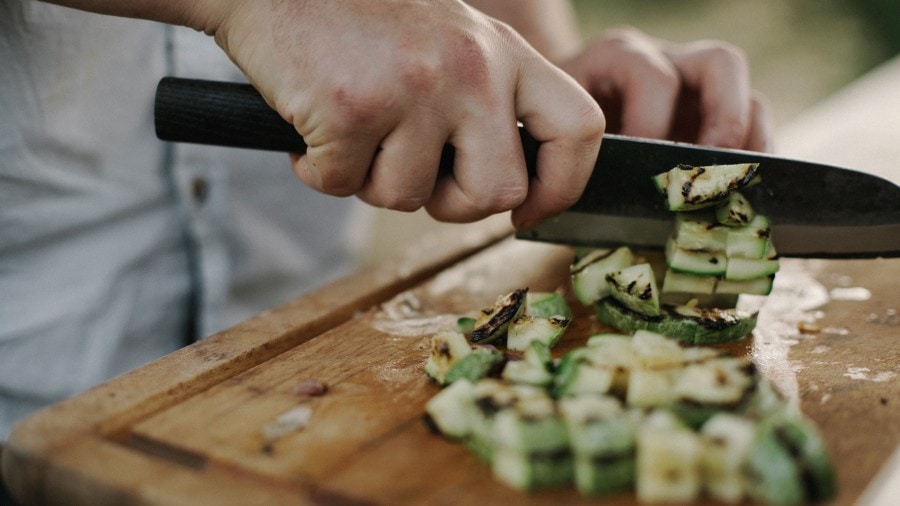The art of forging Damascus steel has captivated the imagination of blacksmiths and kitchen professionals for centuries. Not only is it renowned for its captivating pattern and beauty, but it also offers remarkable strength and durability. At the heart of its mystique are the traditional forging methods for Damascus, a process that blends both ancient techniques and masterful craftsmanship. Understanding this historical art is essential for any kitchen professional looking to deepen their appreciation and expertise in premium cookware.
The legacy of Damascus steel begins long ago, tracing its origins back to ancient civilizations. The name 'Damascus' is believed by many to refer to the city of Damascus, the center for trading these exceptional blades around 1100 to 1700 CE. However, the true beginnings of this steel type are shrouded in mystery, with many attributing its origins to early Indian blacksmiths.

The Mystical Patterns: How Damascus Steel Captivate
The swirled or wavy designs typical of Damascus steel are not mere aesthetic embellishments. These patterns are a result of layering or folding steel in traditional blacksmithing. With each layer, skilled blacksmiths forge together different varieties of steel to produce a melded piece with unique patterns. These patterns are more than just visually attractive; they are symbolically representative of the strength and flexibility that make Damascus steel particularly valuable for culinary tools.
For kitchen professionals, understanding the origins and techniques behind Damascus steel is crucial. The patterns not only indicate the high level of craftsmanship but also ensure efficient cutlery that reliably withstands the rigors of professional kitchens over time.
Core Techniques: Crafting Damascus Steel
Wootz Steel: The Starting Point
The primary material used in the generation of traditional Damascus steel is known as Wootz steel. This type of steel originated in South India around 300 BC and was later adopted by the Middle East. It is characterized by its tracer-like pattern and its composition, primarily consisting of iron, carbon, and other micro-alloys. This steel was developed using a crucible technique that allowed for high-carbon content, a feature that later contributed to its distinctive patterns and blade durability.
Learn more about Wootz steel and its significance in the making of Damascus in this insightful article on medievalware.com.
Folding and Forge-Welding: The Art of Layering
Once Wootz steel is obtained, the process of creating Damascus steel transitions into the artistry of folding and forging. By layering strips of steel, heating them, and hammering them together, blacksmiths ensure the resulting blade has improved strength and retains a sharp edge longer. This labor-intensive process not only makes the blade stronger but also creates the mesmerizing patterns that are loved by so many kitchen professionals today.
If you're interested in the mechanics of knife creation, edge retention techniques can offer additional insights into why these methods matter.
Applying Ancient Techniques in Modern Kitchens
For today's kitchen professionals, mastery over a Damascus blade is as much about appreciation as it is skillful use. Despite technological advancements, many chefs choose Damascus steel for both its performance and its aesthetic. They value the nuanced forging techniques because they result in tools that further enhance culinary art.
Find your ideal Damascus knife set to compliment your kitchen arsenal. Also, explore how to preserve your Damascus set with the right storage solutions.
Enduring Legacy and Attributes
The appeal of traditional forging methods for Damascus among kitchen professionals is timeless. The durability, beauty, and excellent cutting edge are not just historical claims; they are qualities still praised in modern culinary environments. The juxtaposition of historical art and modern-day innovation enables chefs to harness tools that are as reliable as they are fascinating.
Not only are these methods enduring because of tradition, but they also stand the test of time due to the quality and reliability they offer to dedicated craftspeople and culinary experts alike.

FAQs
What makes Damascus steel so special for kitchen use?
Damascus steel is revered for its unique natural patterns and its exceptional edge retention and sharpness, making it ideal for professional kitchen use where precision cutting is key.
Are traditional forging methods still used today?
Yes, many artisans and craftsmen still employ traditional forging methods to create authentic Damascus steel, maintaining the centuries-old techniques that have been celebrated over generations.
Can Damascus steel knives be used for all kitchen tasks?
While Damascus steel knives are versatile and excellent for precision tasks, they are best used with care. Understanding the hardness and limitations, as discussed in this post on steel hardness, ensures they remain in top condition for all culinary endeavors.
This article contains affiliate links. We may earn a commission at no extra cost to you.


























